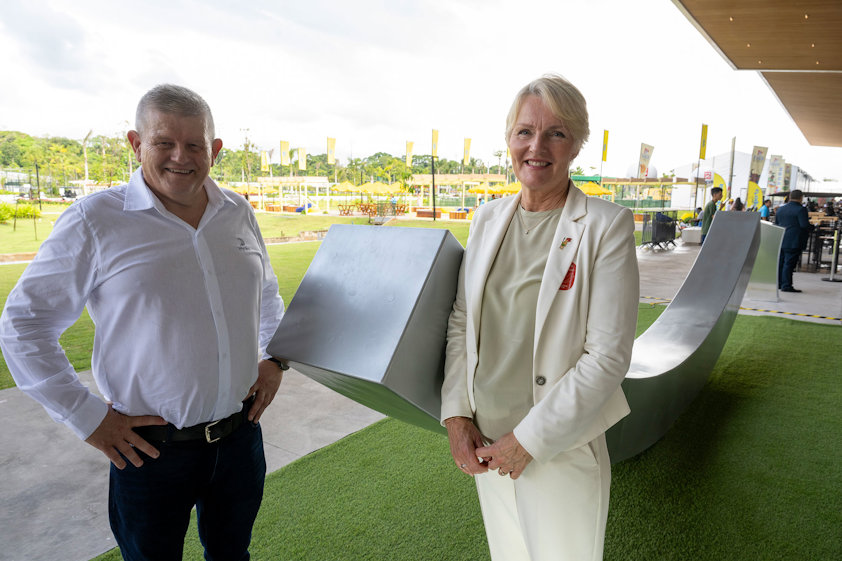The Peace Bench, commissioned and owned by the Nobel Peace Center, is installed in the Green Zone at COP30 as a reminder of the importance of dialogue at the climate talks to take place in Belém. It is donated in celebration of COP30, to the State Government of Pará, to remain as a public asset for city residents, symbolizing the important conversations held during the conference.
The six meter, semi-circular bench was designed by Snøhetta architect company and fabricated by Vestre furniture company. The seat is lower at the center so that those who sit are drawn inward, creating a natural invitation for conversation. The quote from Nelson Mandela served as the inspiration for the design, “The best weapon is to sit down and talk.”
“The Peace Bench turns the simple act of sitting together into a reminder that dialogue is central to resolving the world’s greatest challenges. Placing it in Belém for COP30 underscores the role of dialogue in shaping climate action,” says Kjersti Fløgstad, Director of the Nobel Peace Center.
The Peace Bench is made with aluminium supplied by Hydro, which starts production in the state of Pará, where bauxite is sourced from Paragominas, processed at the Alunorte refinery in Barcarena and supplied to smelters in Pará, Norway and worldwide. Symbolically, the bench now returns to its origins.
“Hydro has proudly partnered with the Nobel Peace Center for more than 20 years, united by the belief that peace helps create more viable societies. By supplying the aluminium for the Peace Bench and placing it in Pará, we symbolically demonstrate our commitment to advancing societal progress in the communities where we operate. This also demonstrates that aluminium, a material the world relies on and helps enable solutions for climate changes, comes from regions like Pará,” says John Thuestad, Executive Vice President of Hydro Bauxite & Alumina.

The design was originally unveiled in 2019 at the United Nations Headquarters in New York, and a bench has since been installed outside the Nobel Peace Center in Oslo.
After COP30, the Green Zone will be converted into a new city park for Belém’s residents, where the Peace Bench will remain as a public asset for the city’s residents.
COP30 brings spotlight to the Amazon
As COP30 turns the world's attention to the Amazon, Hydro brings decades of experience producing alumina and aluminium in Pará, showing how responsible mining can support the green and just transition.
Published: November 11, 2025

